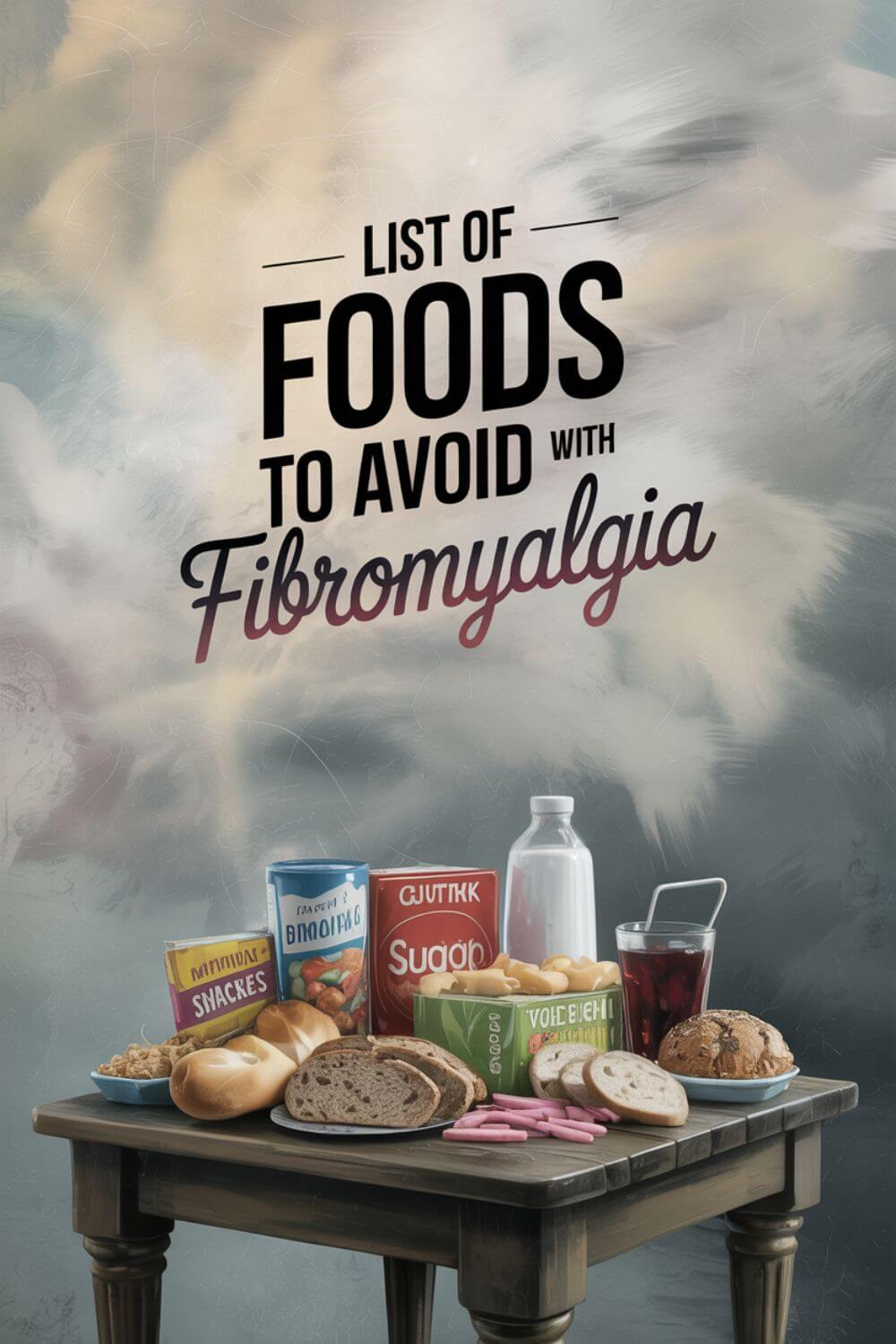List of Foods to Avoid with Fibromyalgia
Have you ever wondered why certain meals make your fibromyalgia symptoms spiral out of control while others seem to ease your pain, even if just a little? Could there be a hidden list of foods to avoid with fibromyalgia that no one ever told you about?
Yes, there is. And the impact these foods can have on your pain, fatigue, and emotional wellbeing is far greater than most people realize. Even one trigger food can ruin an entire day.
For years, I watched my wife push through the unbearable weight of fibromyalgia, those days when she was too sore to move, too tired to speak, and too overwhelmed to explain why she felt worse after something as simple as lunch.
Eventually, we began tracing back every flare, and that’s when we discovered how much food truly mattered.
If you’re living with fibromyalgia or supporting someone who does, keep reading—because understanding which foods to avoid might just be the turning point in how you manage daily pain, fatigue, and overwhelm.
- Why a List of Foods to Avoid with Fibromyalgia Matters So Much?
- Do Certain Foods Trigger Fibromyalgia Flare-Ups?
- How She Changed Her Relationship with Food?
- What Does the Research Say About the List of Foods to Avoid with Fibromyalgia?
- Why Listening to Your Body Matters More Than Any Study?
- The Problem with One-Size-Fits-All Diet Advice
- Can a Food Diary Really Make a Difference?
- Why Gluten and Dairy Get Blamed?
- Understand the Gut-Brain-Pain Connection
- Make Food Changes Without Losing Joy
- How Emotional Stress Impacts Food Reactions?
- How Small Wins Build Long-Term Relief?
- Others Don’t Understand Why You Changed Your Diet
- What Foods Taught Me About Love, Pain, and Healing?
- Learn Together to Cook Differently
- Replace Restriction with Curiosity
- Build a Morning Routine That Nourishes
- Give Yourself Permission to Grieve the Changes
- Notice the Quiet Victories
- Create a Safe Relationship with Food Again
- Include Joy in Every Bite You Can
- Be Okay with Starting Over
- Keep Advocating for Yourself, Even When It’s Hard
- The Effects of Dietary Excitotoxins
- Choosing Whole Foods for Fibromyalgia
- The DASH and Mediterranean Diets
- Fibromyalgia Pain Management Diet: Avoiding Cured Meats
- Omega-3 Fatty Acids and Vitamin D
- Magnesium and Fibromyalgia Symptoms
- Antioxidants and Fighting Excitotoxicity
- Inflammatory Foods and Fibromyalgia Symptoms
- Final Word on the List of Foods to Avoid with Fibromyalgia
- Source Links to the List of Foods to Avoid with Fibromyalgia
Why a List of Foods to Avoid with Fibromyalgia Matters So Much?
When I first started researching the list of foods to avoid with fibromyalgia, it wasn’t just out of curiosity. It was out of desperation.
I had run out of ways to ease my wife’s pain. Medications helped, but only to a point. Rest was necessary, but never enough. Then one evening, after yet another day of her struggling through intense fatigue and muscle pain, I noticed something. We had eaten a heavily processed takeout meal the night before. And it wasn’t the first time this happened.
I started paying closer attention, and patterns began to form. Certain foods made her more sensitive to touch. Some seemed to steal whatever little energy she had left. And some made her cry in frustration because she couldn’t explain the sudden spike in pain.
At first, I felt helpless. It’s agonizing to watch someone you love suffer and not know how to stop it. But realizing that her food might be part of the problem gave me something I could actually act on.
We began removing certain foods. Not all at once. Slowly. Mindfully. Carefully. The results weren’t overnight, but they were noticeable. Her flare-ups became less frequent. Her energy, though still limited, became more stable. And for the first time in a while, she felt like her body wasn’t working entirely against her.
I’m not saying food is a cure. It’s not. But when you’re dealing with a chronic condition like fibromyalgia, every small improvement counts. Every ounce of relief is something to hold on to.
As her husband, I don’t just want her to survive—I want her to live. To feel safe in her body again. To laugh without bracing for pain. That’s why I care so much about this topic. And that’s why I’m sharing what we’ve learned.
Because if certain foods can fuel the fire, others might just help us put it out.
Let me walk you through this. Because food isn’t just fuel. For someone with fibromyalgia, it can be a trigger, a trap, or a tool for healing.
Do Certain Foods Trigger Fibromyalgia Flare-Ups?
I used to believe flare-ups were random. That they came without warning and left just as unpredictably. But over time, something shifted in how I saw my wife’s pain.
I started to observe her days closely. What she ate, how she slept, even how much water she drank. And the more I paid attention, the clearer it became — food was not neutral. Certain meals weren’t just failing to nourish her, they were hurting her.
Some foods made her restless at night. Others caused her body to ache the next morning like she’d run a marathon. A simple cup of coffee in the afternoon could leave her tossing and turning, leading to days of exhaustion and pain. I began to realize these weren’t coincidences.
It’s easy to think of food as innocent. But for someone battling fibromyalgia, it can be a minefield.
There are processed meals filled with additives she used to enjoy without consequence. Now, they left her bloated, foggy, and even emotionally on edge. We never used to second-guess things like artificial sweeteners or white bread. But after countless painful nights, we had to ask — was it really worth it?
For her, dairy became another question mark. Some days it caused no problem, but other days even a splash of milk stirred up abdominal discomfort and inflammation. We realized it wasn’t about cutting everything out permanently. It was about listening to her body.
Responding with care. Slowing down enough to see what her symptoms were trying to say.
I remember one week in particular. She was doing relatively well — light walks, fewer panic attacks, better sleep. Then we had a weekend of takeout. Nothing extreme, just easy meals with sauces, sugars, and flavor enhancers we didn’t think twice about.
By Monday, she couldn’t get out of bed.
Her muscles were rigid. Her eyes looked heavy. Her breathing was shallow. I held her hand and asked if she was okay. She didn’t say anything. Just shook her head. That silence still lives in me.
It was the food. Not entirely, but undeniably part of it.
Does that mean every fibromyalgia warrior will respond the same way? No. But it means food can be a trigger. A very real one.
And for many, it’s not about eliminating everything. It’s about building awareness. Keeping track. Honoring the body’s response with compassion instead of guilt.
We began keeping a food diary. Not obsessively. Gently. Noting what she ate, how she felt a few hours later, and what the next morning looked like. Slowly, we saw patterns. A certain type of bread. Specific sauces. An artificial sweetener in a drink. One by one, the culprits emerged.
That’s when we started creating our own list — her list of foods to avoid with fibromyalgia. Not a punishment. A tool. A way to reclaim some control in a body that often feels out of control.
If you’re reading this and thinking, “That sounds like me,” then trust that instinct. It’s not in your head. Food does influence pain.
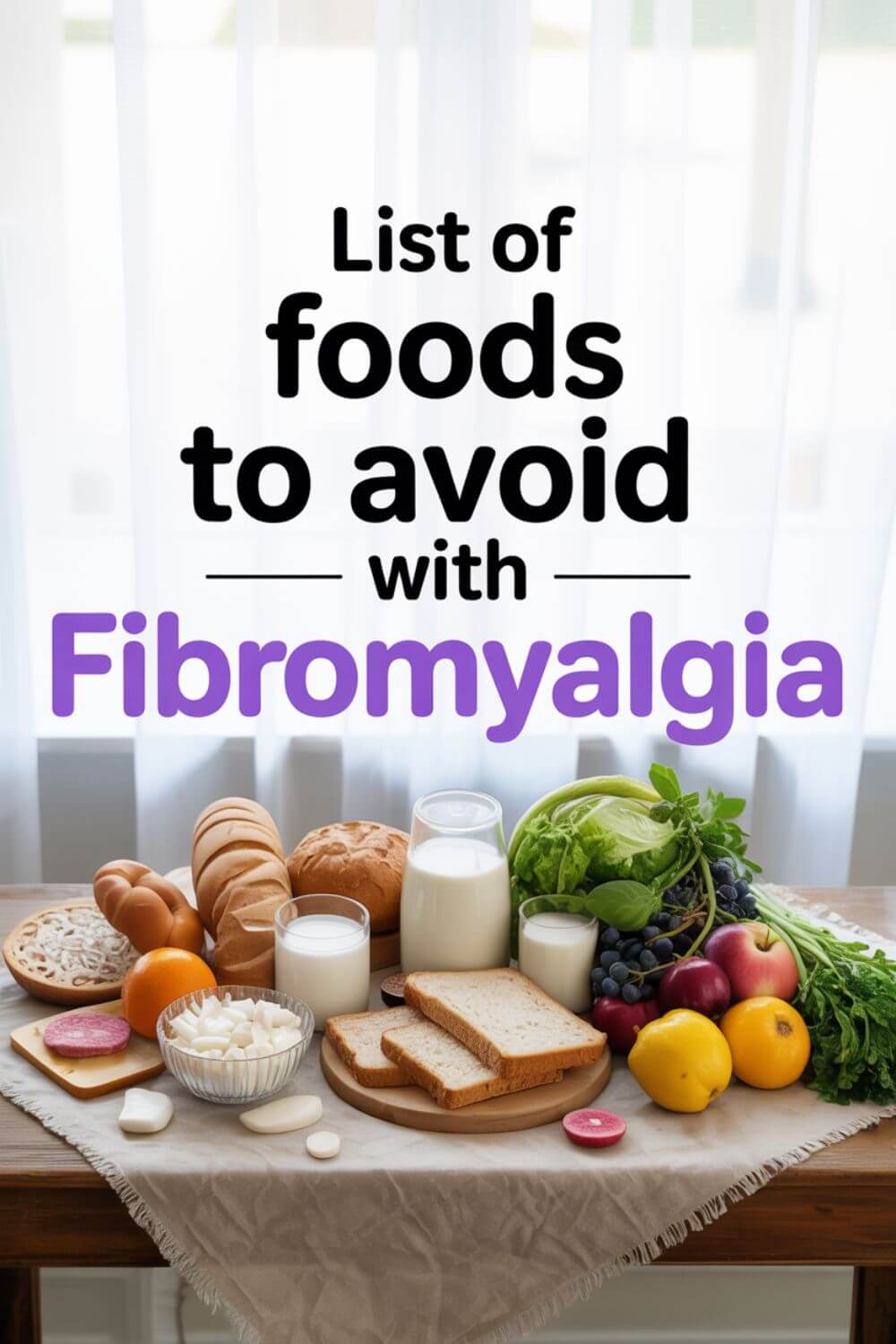
Sugar and Refined Carbohydrates
There’s a reason sugar is one of the first things we removed from my wife’s diet. When she consumed sweets or even white bread or pasta, her energy would crash within hours, and the next day her pain was sharper and harder to manage.
I know how tempting sugar is, especially when you’re tired, emotional, or in pain. But for many living with fibromyalgia, sugar acts like fuel to the fire. It inflames already sensitive nerves and adds to the fog and fatigue.
Refined carbs behave much the same — white rice, pastries, cereals. They spike blood sugar and then leave you drained, often worsening the cycle of chronic exhaustion. We learned to swap these for whole grains, natural sweeteners, or simply smaller, mindful portions.
You don’t have to be perfect. Just aware.
Processed and Fast Foods
These were some of the hardest to let go of, like the quick microwave dinners after long days, the snacks during road trips. But we noticed a clear connection. Fast food often left my wife bloated, emotionally overwhelmed, and more prone to flare-ups.
It wasn’t just about calories. It was the additives, the preservatives, and especially the sodium and trans fats. These foods are designed for convenience, not nourishment.
For someone with fibromyalgia, they can disrupt everything: digestion, inflammation levels, even sleep. Once we began preparing simple, clean meals at home with fewer ingredients, we noticed calmer days. Fewer flares. More mental clarity. It took effort, but it was worth it.
Unhealthy Fats and Frying Oils
This one caught us off guard. We thought oils like vegetable or corn oil were fine in moderation. But frying foods in them or eating packaged snacks cooked with these fats seemed to bring on joint stiffness and that all-too-familiar body heaviness the next day.
These fats promote inflammation and can affect hormone balance, which already feels fragile for many women with fibromyalgia. We gradually started replacing them with olive oil and small amounts of coconut oil — not perfect, but better.
Her digestion improved, her skin calmed down, and her energy crashes became less severe. It was subtle, but over time it added up to a noticeable shift.
Gluten and Wheat Products
This topic is controversial, I know. Not everyone with fibromyalgia has gluten sensitivity or celiac disease. But here’s what we experienced: after cutting out most wheat-based products, especially processed breads and pastas, her stomach pains decreased, and her anxiety wasn’t as intense.
The fog that used to consume her on some mornings began lifting more quickly. We didn’t go fully gluten-free forever — but we listened to her body. When she ate fewer gluten-heavy meals, she felt better. Simple as that.
You don’t need a diagnosis to trust your own patterns. If gluten makes your symptoms worse, there’s no harm in experimenting and seeing if your days become a little lighter.
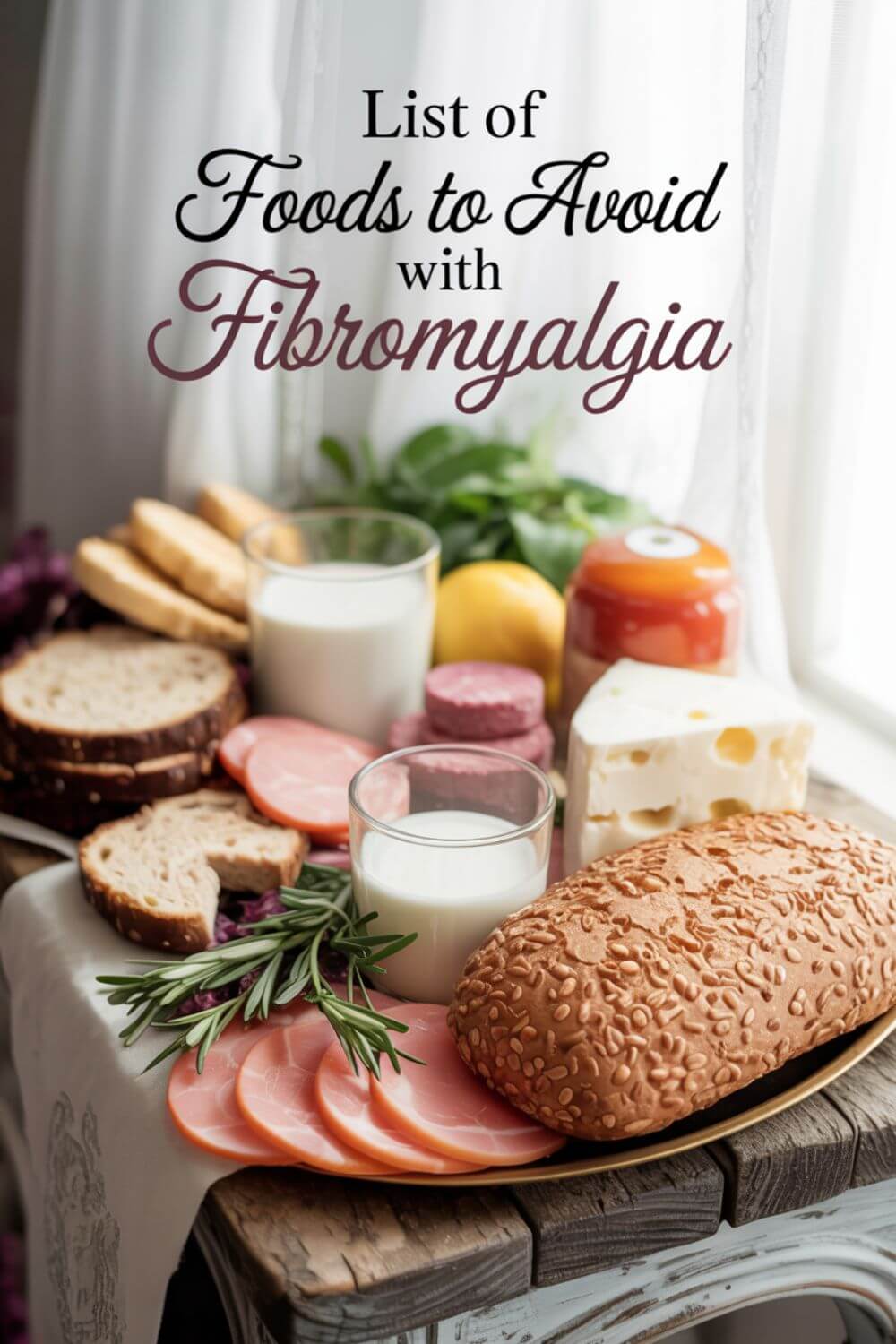
Dairy Products
My wife used to love cheese. Creamy pasta dishes. Her favorite hot drinks with frothy milk. But dairy began causing her subtle distress: bloating, low mood, and even skin flare-ups. It wasn’t dramatic, but it was there.
And when we replaced cow’s milk with oat or almond milk, her body seemed to breathe a little easier. This doesn’t mean everyone with fibromyalgia must ditch dairy. But it does mean you might want to pay attention to how it makes you feel.
For some, lactose is hard to digest. For others, it’s the hormones in dairy that throw things off. Either way, small changes can lead to more peace inside your body.
Nightshade Vegetables
This was a tough one. We’re both big fans of Italian food, and many classic dishes include tomatoes, peppers, eggplants, and potatoes.
But when we learned that nightshades might be connected to inflammation and increased pain for some people, we became curious. So we tested it. We removed them for a few weeks. Her pain levels dipped slightly, especially in her joints. It wasn’t miraculous, but noticeable enough.
When we added them back in, the pain returned a little sharper. Again, this doesn’t apply to everyone. But if you’re eating nightshades often and still experiencing unexplained flares, it might be worth testing how your body responds without them.
Artificial Sweeteners and Additives
This one broke my heart a little because my wife used to reach for sugar-free snacks thinking they were better options. But aspartame and MSG made her headaches worse and her irritability spike. It was like these invisible ingredients hijacked her nervous system.
Once we cut them out, the difference was almost immediate. Her sleep quality improved. Her digestion settled. Even her moods stabilized a little. Artificial additives hide in so many everyday foods, diet sodas, flavored yogurts, even seemingly healthy snacks.
Reading labels became our quiet rebellion against suffering. And we’re not perfect, but we’re more in control now.
Caffeine and Alcohol
This was one of the most emotionally complicated categories. My wife needed her morning coffee to function, and wine was a small pleasure after especially hard weeks. But both took a toll.
Excess of caffeine worsened her anxiety and disrupted her already fragile sleep. Alcohol, even in small amounts, often triggered inflammation and emotional crashes the next day.
We didn’t cut them out entirely, but we reduced them dramatically. Now, she drinks herbal tea most mornings, and wine is saved for rare celebrations. It gave her back something she needed more than caffeine, it gave her stability.
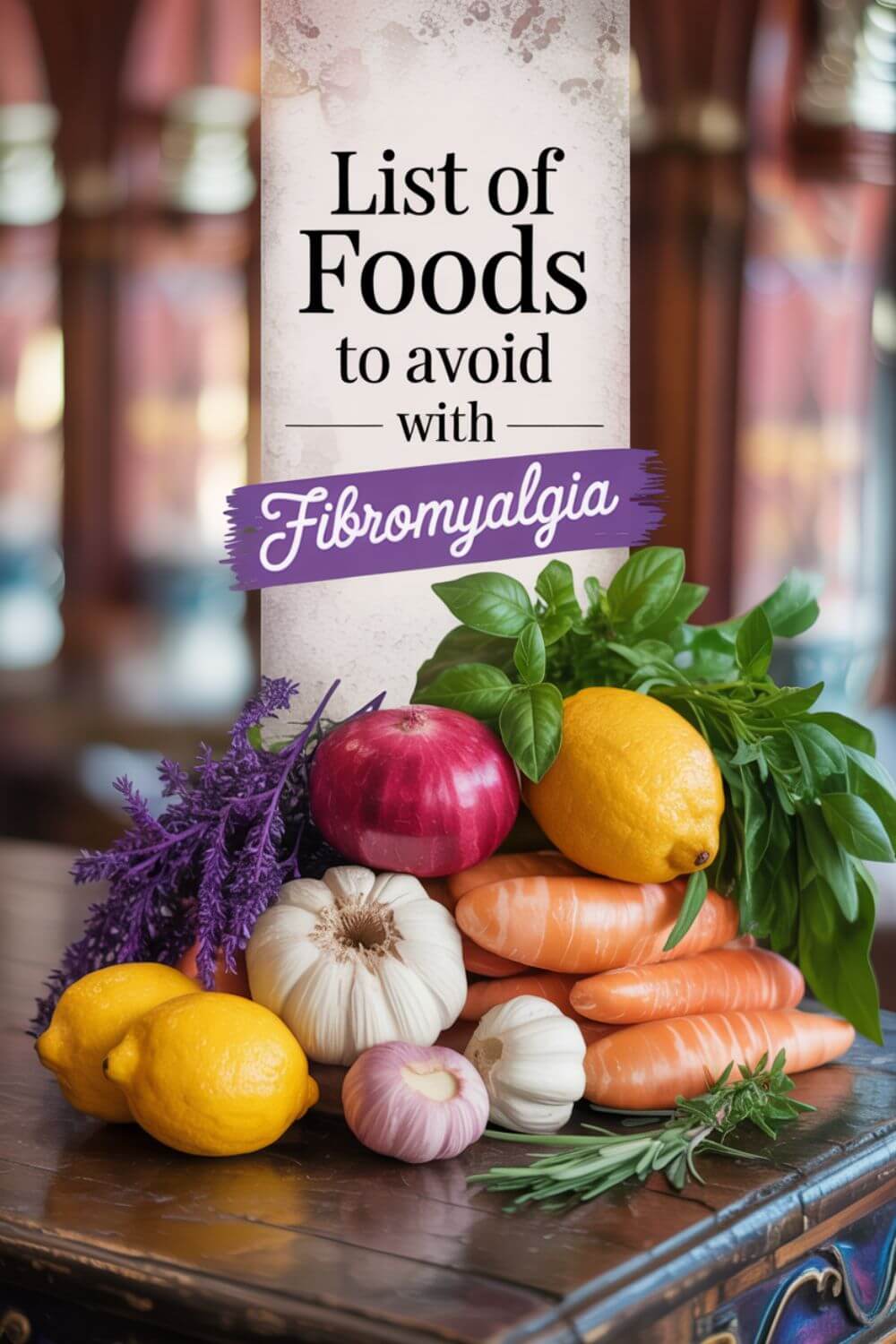
How She Changed Her Relationship with Food?
I won’t pretend this shift was easy.
When we first realized certain foods were making my wife’s fibromyalgia symptoms worse, we didn’t throw everything out overnight. We took a breath. Then we took a step. And then another.
At first, the changes felt overwhelming. She loved her creamy pasta, her sweet breakfasts, and especially her coffee. And no, she didn’t give it up coffee completely. But we did switch to caffeine-free.
It wasn’t about taking everything away from her. It was about listening to her body with more love than ever before.
We didn’t treat food like the enemy. We treated it like information.
Each reaction her body gave us after a meal wasn’t failure. It was feedback. And that helped us navigate decisions not out of fear, but out of care.
There were trial and error days. There still are. Some changes felt like losses. Her favorite Italian recipes, the comfort of spontaneous takeout, the simplicity of ready meals. But slowly, we began finding joy in replacements.
A dairy-free version of her favorite drink. Gluten-free pasta that actually tasted good. Even pizza nights found a new, gentler form.
Food became part of her healing, not just a necessity. And it became something we shared together. I was never going to let her face it alone.
Because this wasn’t just about eliminating fibromyalgia flare foods. It was about giving her back some power in a life where chronic illness had taken too much already.
We made our own list of foods to avoid with fibromyalgia. It wasn’t from a doctor or a textbook. It was built from love, trial, observation, and hope.
And if you’re reading this wondering where to begin, maybe that’s your first step too. Not perfection. Just presence. Just paying attention.
You’re not alone in this. Not when we’ve lived it, too.
What Does the Research Say About the List of Foods to Avoid with Fibromyalgia?
While personal experience guided many of the changes we made in my wife’s diet, I also turned to research. I needed to know we weren’t just guessing. That what we were seeing in her day-to-day pain, fatigue, and mood had some grounding in science, not just coincidence.
The medical world doesn’t always move fast when it comes to chronic illness. And fibromyalgia is still misunderstood by many professionals.
There is growing evidence that certain foods can worsen inflammation, aggravate nerve sensitivity, and make fatigue more difficult to manage. Especially when combined with poor sleep and stress.
Studies suggest that sugar, processed foods, and refined carbs don’t just affect blood sugar or weight, but also spike inflammatory markers, which for someone already living with fibromyalgia, can mean more intense pain and less resilience to flare-ups.
We also saw research hinting at links between gluten and increased fibromyalgia symptoms, even in those who don’t have celiac disease. That was an eye-opener for us.
The same applied to dairy. There were reports of people who cut it out and saw improvements in digestion and energy. Again, not proof. But enough to make us listen.
And then there’s the topic of artificial additives. Things like MSG and aspartame have been linked to neurological symptoms in some individuals. My wife used to get awful migraines after eating processed snacks.
Once we removed those, her headaches became less frequent. Coincidence? Maybe. But we chose to believe her body over any debate.
I don’t claim to be a doctor. I’m just a husband trying to protect the woman I love. But after years of trial, error, and digging through studies late into the night while she slept beside me, I began to trust both the science and the signs her body gave us.
The research isn’t always black and white. And not everyone with fibromyalgia will react the same. But if you’ve been feeling stuck, or like your symptoms are getting worse without reason, looking at what you’re eating might be a powerful place to start.
Because this isn’t just about a strict diet. It’s about understanding what your body is telling you — and choosing to respond with compassion instead of frustration.
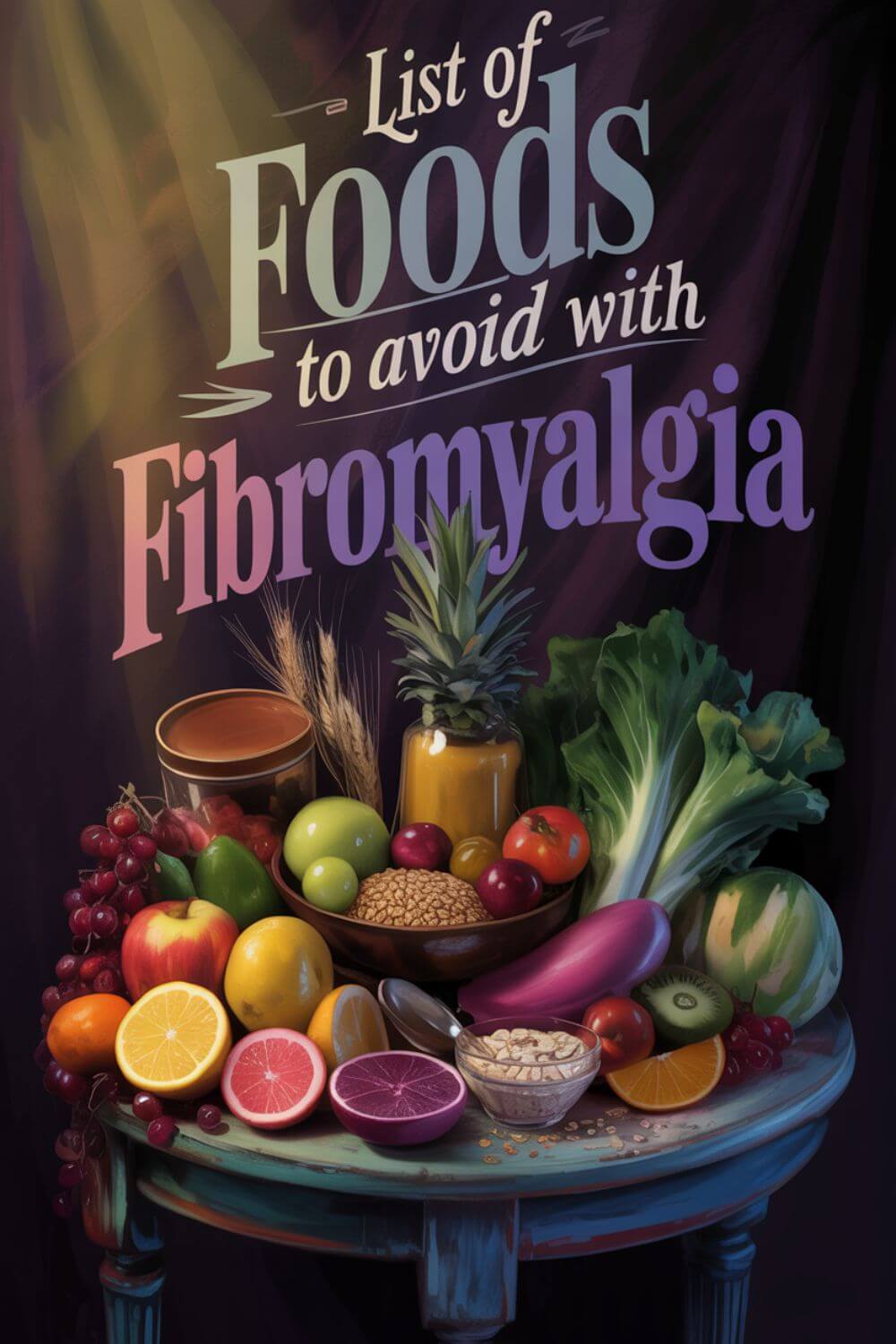
Why Listening to Your Body Matters More Than Any Study?
I’ve read so many articles, studies, and forums trying to make sense of fibromyalgia. But if there’s one thing I’ve learned watching my wife live through it, it’s this, her body knows more than any research paper ever could.
The science gives us starting points, but real life brings the answers. One day dairy hurts, the next it doesn’t. One week gluten causes fog, another it doesn’t. That doesn’t mean she’s imagining things. It means her condition is complex, and her body is communicating.
Listening to those signals became our lifeline. Even when doctors were unsure, her body wasn’t. I learned to trust her when she said, “This made me feel worse.” That alone changed everything.
The Problem with One-Size-Fits-All Diet Advice
It’s easy to feel pressure to follow the “perfect” fibromyalgia diet, but the truth is, there isn’t one. We tried plans suggested by experts, even books written by medical professionals. Some of them helped, but some made her feel worse.
It took time to accept that just because a food works for someone else, doesn’t mean it will work for her. There is no universal list that fits everyone. And that’s not failure. That’s reality.
The sooner we stopped chasing the one-size-fits-all answer and started honoring what actually worked for her, the more stable her days became. That’s when healing truly began, not from perfection, but from personalization.
Can a Food Diary Really Make a Difference?
At first, the idea of tracking everything she ate felt exhausting. Another task in a life already full of managing pain and symptoms. But we didn’t approach it rigidly. Just a small notebook. A few lines a day. “Breakfast: eggs and toast. Felt dizzy later.” “Had pasta. Next morning, deep body aches.”
Slowly, a picture formed. We began to see what her body loved, and what it didn’t.
This wasn’t about restriction but it was about freedom. The kind that comes when you understand yourself better. For my wife, that diary became more than data. It became a way to take her power back from a condition that had taken so much.
Why Gluten and Dairy Get Blamed?
We were skeptical at first. Gluten and dairy seemed to be blamed for everything these days. But over time, we noticed something undeniable. When she ate less gluten, her gut calmed down.
When she limited dairy, her anxiety dropped. It wasn’t about following a trend. It was about tuning in. We didn’t remove these completely or forever, just enough to notice changes.
If you’re struggling with unpredictable flare-ups or digestive issues, trying a gentle reduction might be worth exploring. You don’t need a diagnosis to listen to what your body is already saying. Trust that it’s allowed to feel better.
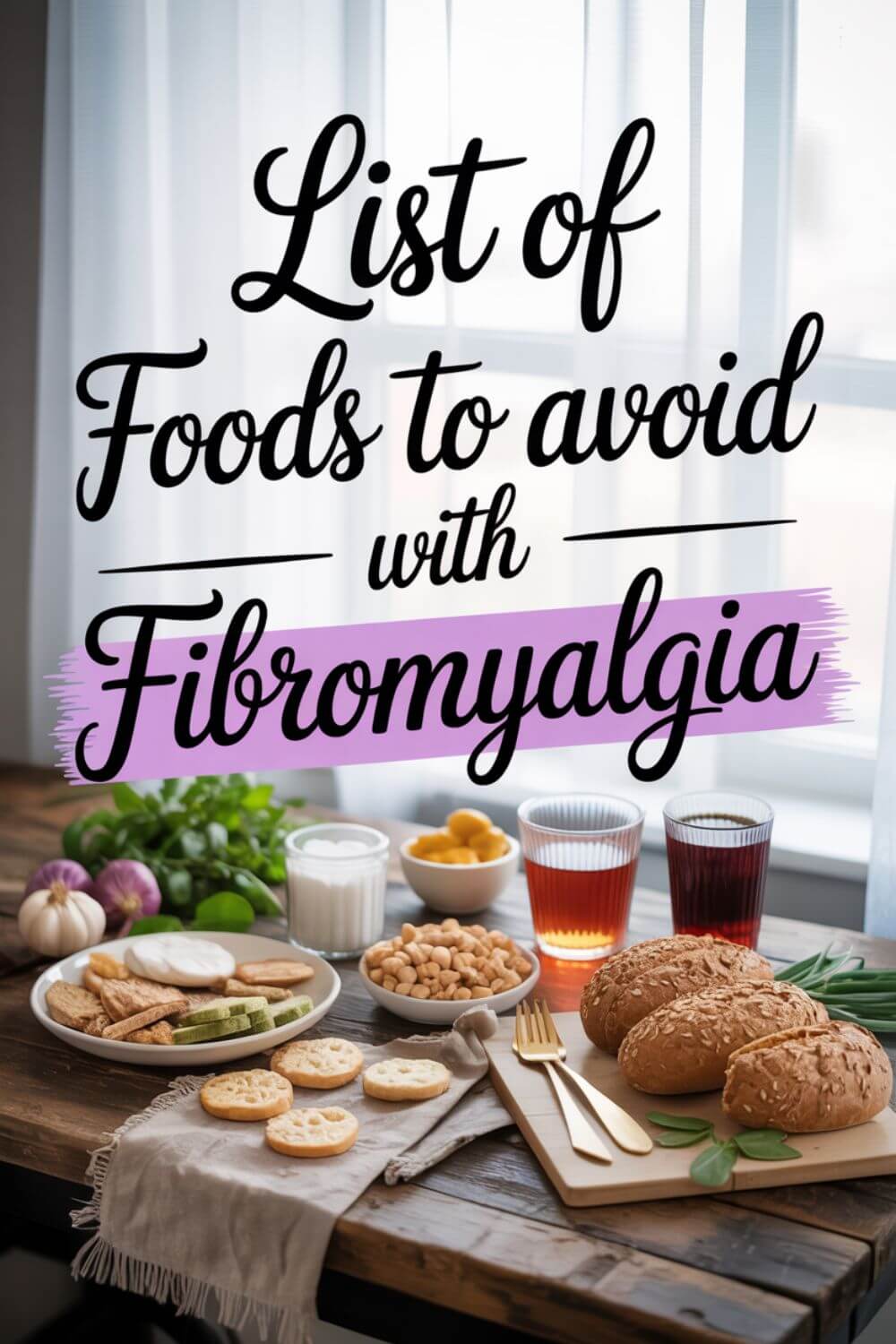
Understand the Gut-Brain-Pain Connection
We often separate physical symptoms from emotional ones. But with fibromyalgia, they’re deeply linked. We began learning how gut health can influence not just digestion, but pain sensitivity, mood swings, and energy levels.
When her stomach was off, her entire day was harder. Her brain fog got heavier. Her muscles felt more tender. This connection between gut, brain, and pain made us rethink everything, especially food. We added more fiber, probiotics, anti-inflammatory meals. Nothing magical, just consistent.
And the shift was real. Milder flares. Fewer breakdowns. More good days. It reminded us that food touches everything, even emotions.
Make Food Changes Without Losing Joy
Some days, she just wanted pizza. And honestly? We let her have it.
Because this wasn’t about control or punishment. It was about reducing suffering, not joy. We tried our best to make nourishing choices, but never with guilt. Living with chronic illness is already hard. Food shouldn’t make it harder. So we practiced balance.
If she wanted something that might upset her body, we made space for it with grace.
No shame. Just awareness. And over time, those choices became more intuitive. She craved things that helped her. Because her body began trusting her again. And that was beautiful to witness.
How Emotional Stress Impacts Food Reactions?
Something we didn’t expect: the role emotions played in how her body processed food. On high-stress days, even safe foods caused discomfort. Her pain was louder. Her digestion, slower.
It wasn’t just about the meal itself, it was about the state she was in while eating. We learned that calming rituals before meals helped. Soft music. Breathing. Slowing down. These little things made a big difference.
Food is more than ingredients. It’s energy. Emotion. Intention. That shift in perspective allowed her to eat with more safety and less fear, even on days when everything else felt unpredictable.
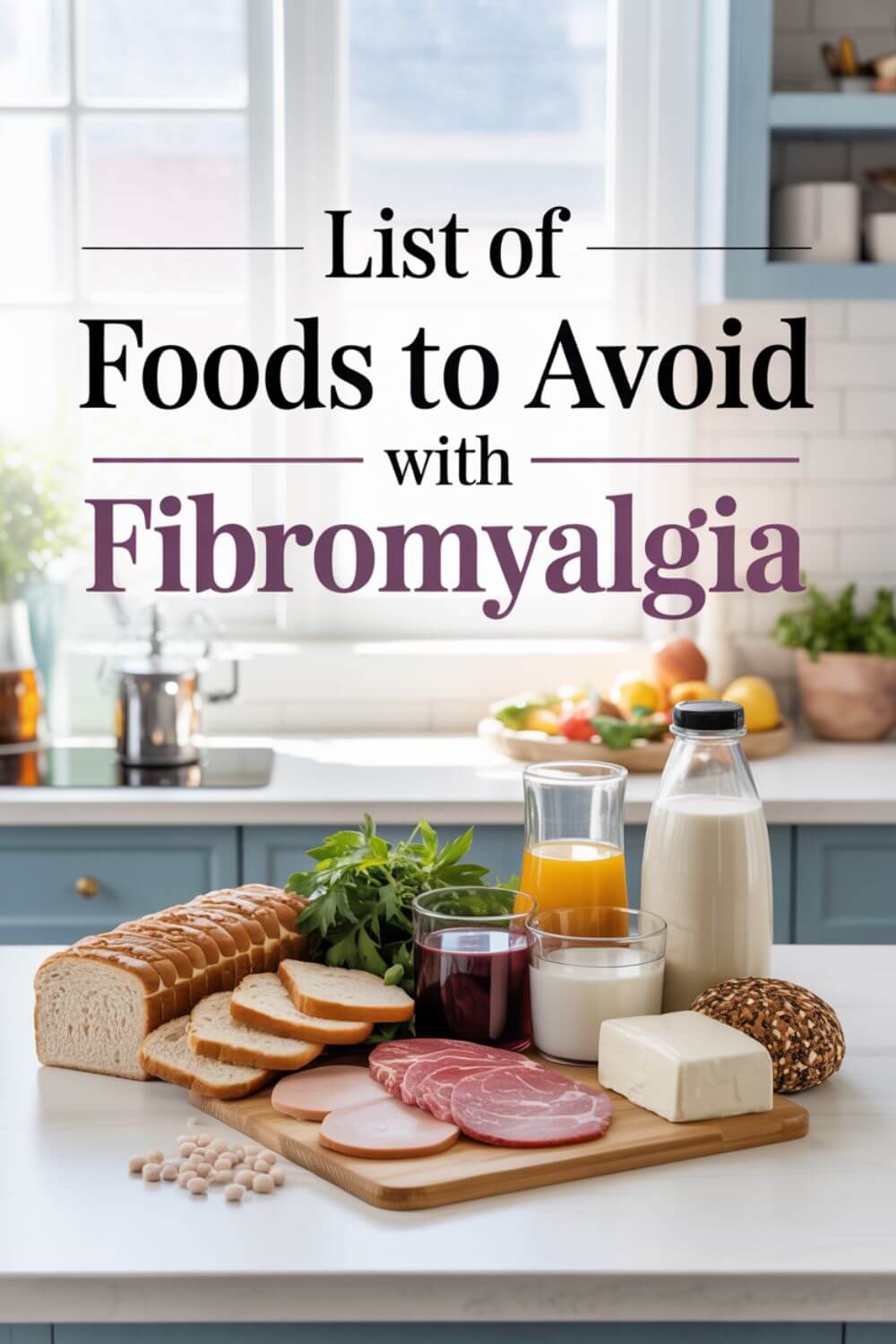
How Small Wins Build Long-Term Relief?
We didn’t wake up one day with everything fixed. There were no instant results. But over time, small changes added up. Less sugar. Less takeout. More homemade meals.
A better breakfast routine. Each choice wasn’t dramatic. But together, they helped her regain a piece of her life. Fewer pain days. More energy to walk. Enough stability to consider future plans.
That’s what these changes gave us. Not a cure, but a pathway to relief. A string of small wins that built something bigger than we imagined. If you’re starting this journey, don’t wait for perfection. Begin with one little step. Then another.
Others Don’t Understand Why You Changed Your Diet
This one hurt. People questioned her new food choices. Family, friends, even doctors sometimes.
- Are you sure it’s not in your head?
- You don’t look sick!
- That’s a bit extreme, isn’t it?
These words chipped away at her confidence. But I reminded her: no one else lives in her body.
No one else feels her pain. If changing how she eats makes her feel 10% better, that’s enough. We stood together in the discomfort of judgment.
And we stood taller knowing the change was working. You don’t owe anyone an explanation. Your healing is reason enough.
What Foods Taught Me About Love, Pain, and Healing?
This wasn’t just a food journey. It was a life journey.
When we first started identifying the foods that made my wife’s fibromyalgia worse, it felt like we were trying to put together a puzzle without all the pieces. And for a while, every step forward came with a few steps back. There was frustration. Grief. Even guilt.
Food had always been a comfort for her. Now it had become something we had to question.
But slowly, things changed.
We found a rhythm. We discovered her triggers, not all at once, not perfectly, but piece by piece. And every time we learned something new about how her body reacted to a meal, it felt like we were reclaiming a bit of peace from the storm.
This wasn’t about rules. It was about respect. Respecting her symptoms. Her limits. Her pain.
I know how hard it is to watch someone you love suffer and not know how to fix it. But what I’ve learned is that love isn’t about fixing. It’s about showing up. And food was one of the ways I could show up for her.
I cooked with her. Ate with her. Journaled symptoms with her. I took it seriously when she said, “This doesn’t feel right.” And I celebrated with her when she said, “I feel a little better today.”
These changes didn’t just help her body, they helped our relationship. Because in listening to her pain, I was also saying, “I believe you.”
That’s what people with fibromyalgia need most. To be believed. To be seen.
So if you’re reading this, wondering if changing your diet is worth it, or feeling too tired to try again, please know, I’ve been there. And I promise, even the smallest shift can bring light into the dark.
Because food isn’t just about nourishment. It’s about power. And when someone with fibromyalgia takes back that power, even in tiny ways, it’s a beautiful, powerful thing to witness.
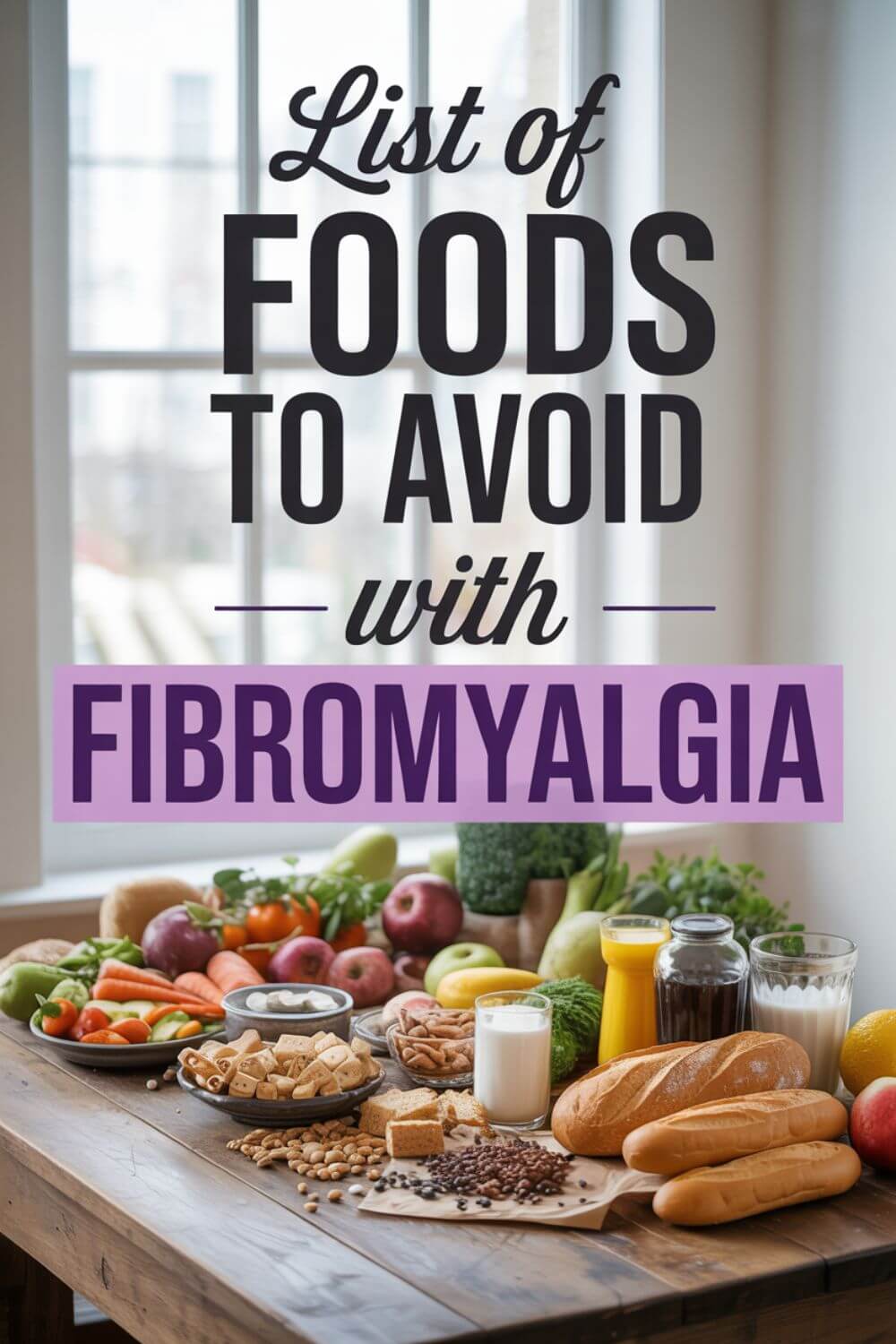
Learn Together to Cook Differently
When we realized certain meals were hurting her, I didn’t hand her a list and walk away.
I stood beside her in the kitchen, uncertain but committed. We Googled new recipes. We made a mess. We got it wrong. But in learning to cook differently, we also learned to live more gently.
Cooking became our safe space, not a source of stress. We didn’t strive for perfection, just peace. Some days, dinner was simple soup. Other days, a creative new dish that made her smile. Cooking together wasn’t just about food. It was about reminding her she wasn’t alone in this.
Replace Restriction with Curiosity
Cutting foods out felt like punishment at first. Her favorite snacks. Her morning coffee, now is caffeine-free. But what changed everything was curiosity.
- What could we try instead?
- What foods felt light, soothing, or stabilizing?
We experimented with new ingredients, new textures, and new routines. It stopped being about what she couldn’t have, and became a journey of discovering what her body loved.
Curiosity gave her back control. And in the moments when she missed the old things, I reminded her gently, we’re not saying goodbye forever, just learning what brings her body peace right now.
Build a Morning Routine That Nourishes
Mornings used to be her hardest time. Achy muscles. Heavy fatigue. Emotional overwhelm. So we created a routine that gently supported her.
A warm caffeine-free coffee alternative. A slow breakfast with protein and something soft on the stomach. No rushing. No noise. Just safety. It wasn’t about calories, it was about kindness.
A nourishing morning helped shape the rest of her day. And when we skipped it?
We felt the difference. It taught us that even one gentle meal could set the tone for everything that followed. It’s not dramatic. But it’s powerful.
Give Yourself Permission to Grieve the Changes
There were tears. Not just from the pain, but from the loss of comfort foods, old traditions, even cultural dishes she loved growing up. And that grief is real. It’s not silly. It’s valid.
When your body changes the rules, it’s okay to feel sad. We held space for that. We didn’t rush to replace the foods. We let her cry over them. Grief made room for healing.
Once we stopped pretending everything was fine, she had the strength to create something new. Let yourself mourn the old, and when you’re ready, build something beautiful from where you are now.
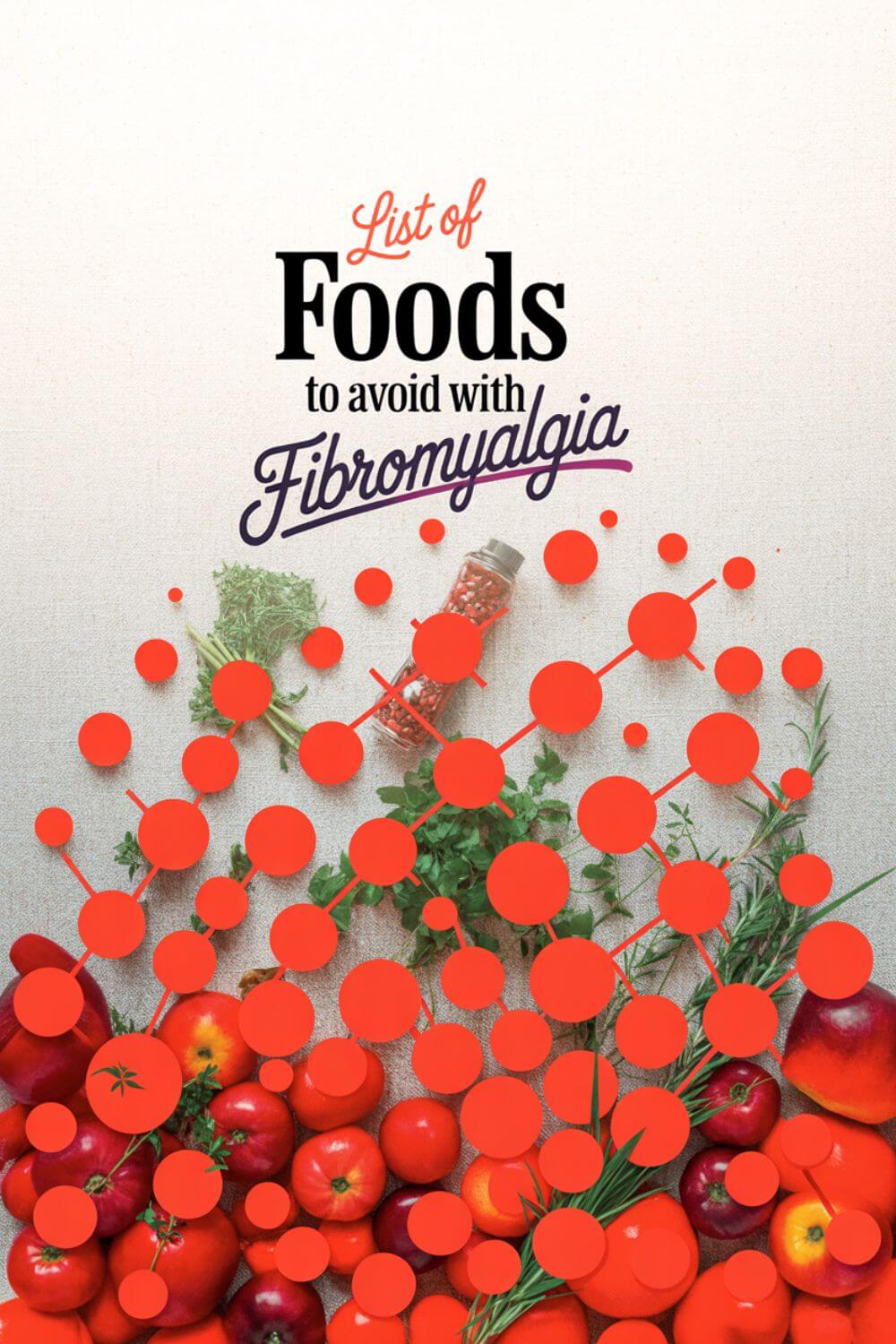
Notice the Quiet Victories
There’s something magical about subtle wins. The kind you don’t always see unless you’re really paying attention. Like waking up without stiffness. Or getting through the afternoon without needing to lie down. Or eating something new and not flaring the next day.
These little moments used to go unnoticed, but now, we cherish them. Because for someone with fibromyalgia, “fine” isn’t nothing. It’s everything.
Every food choice that brings more stability is a quiet victory. And we’ve learned to count them like treasures. They remind us this journey is working, even when it’s slow.
Create a Safe Relationship with Food Again
Food used to make her anxious. Every bite came with a question mark: “Will this hurt me?”
And that kind of fear wears you down. So we worked together to rebuild trust — not just in food, but in her body. We didn’t label meals as “good” or “bad.” We simply asked, “How did that make you feel?”
And when a food worked well, we celebrated it. When one didn’t, we let it go without shame.
That gentle approach helped her see food as a partner, not an enemy. And that’s when she started feeling safe at the table again.
Include Joy in Every Bite You Can
Joy doesn’t have to disappear just because you’re eating differently. In fact, joy can be part of the healing. We made food beautiful again, with colors, textures, herbs, and spices that brought life to the plate. Even simple meals were presented with love.
We didn’t rush. We savored.
Some days, it was the only joyful moment she had, and that was enough. When you’re living with fibromyalgia, joy can feel hard to find. But we learned that food can carry joy, if you let it. Even in small, quiet ways. Especially when it’s shared with someone who cares.
Be Okay with Starting Over
Not every plan worked. Not every “safe” food stayed safe. Sometimes we thought we had it figured out, and then her symptoms changed again. That’s fibromyalgia. It evolves. And so does the body.
We learned to stay flexible. To be okay with starting over. It wasn’t failure. It was growth. The list of foods to avoid with fibromyalgia isn’t static. It changes as her body changes.
Accepting that helped both of us breathe easier. Because it meant we didn’t need to have it all figured out, we just needed to keep showing up.
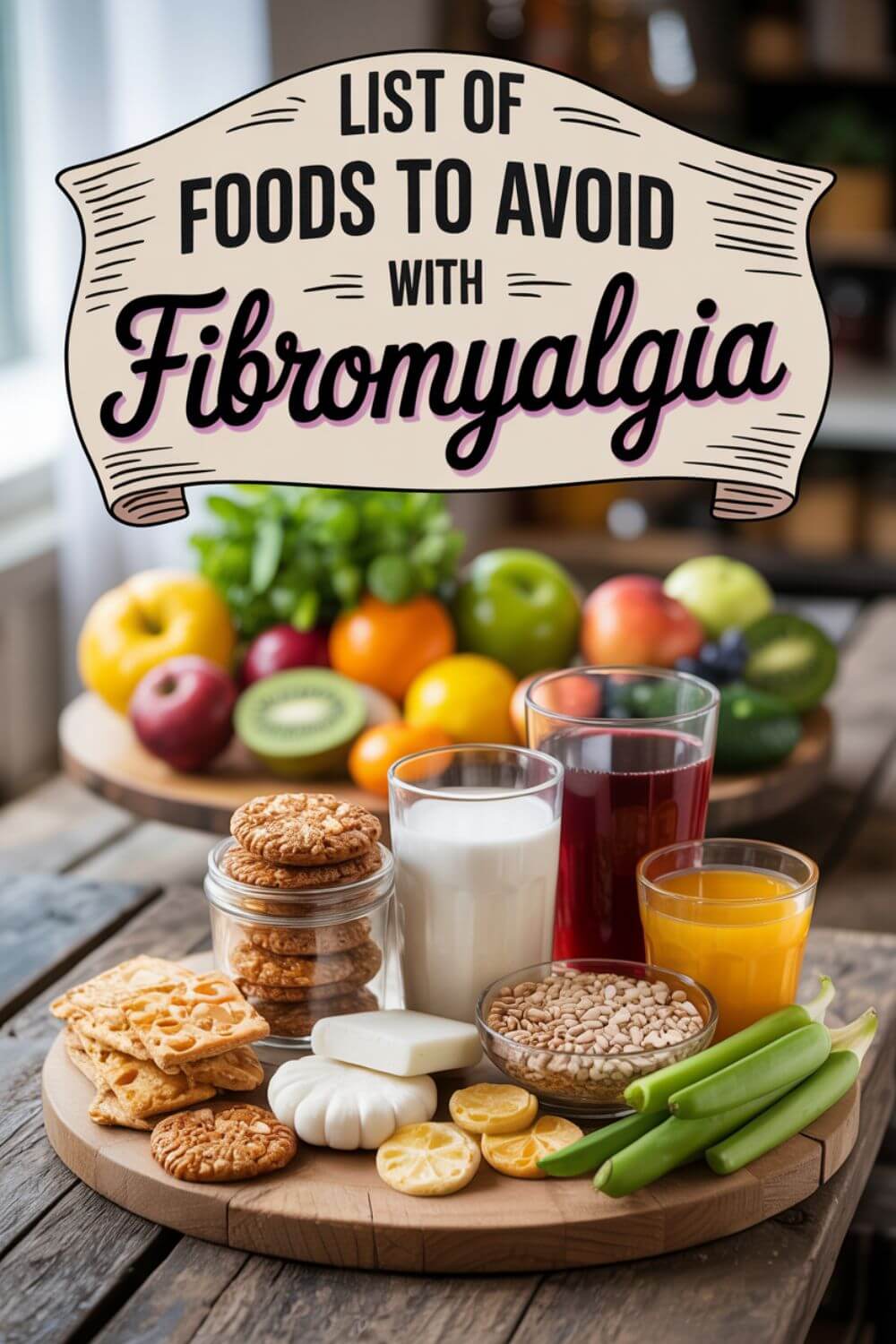
Keep Advocating for Yourself, Even When It’s Hard
People didn’t always understand her new food choices. Some rolled their eyes. Others made jokes. Even in doctor’s offices, she was met with skepticism. But she kept going. We kept going.
Because her health is real. Her pain is real. And her healing deserves respect. If food helps her feel more stable, that’s all the proof we need. Advocacy isn’t loud. It’s quiet choices made every day, even when no one sees.
Keep doing what works for you. Even if it’s uncomfortable. Even if you have to explain it again and again. Because you’re worth it. Your comfort is worth it.
The Effects of Dietary Excitotoxins
Dietary excitotoxins, such as monosodium glutamate (MSG), can have an impact on fibromyalgia symptoms. Studies have indicated that eliminating food additives like MSG from the diet can lead to a reduction in symptoms for some people. While the results of these studies have been mixed, eliminating food additives remains a low-cost treatment option with few side effects.
It is important for you to read food labels carefully and avoid ingredients that contain added glutamate. This includes some of the ingredients like hydrolyzed, autolyzed, protein concentrate, or protein isolate.
Common sources of MSG include canned soups and vegetables, chips, and processed meats. By avoiding these foods and opting for whole, unprocessed options, people with fibromyalgia can reduce their exposure to dietary excitotoxins.
While dietary changes may not completely eliminate symptoms, they can be one component of a comprehensive fibromyalgia management plan that includes medication, therapy, and lifestyle modifications. Remember to consult this with a healthcare professional before making any significant dietary changes.
The Connection Between Dietary Excitotoxins and Fibromyalgia Symptoms
Excitotoxins are chemicals that stimulate neurons in the brain, potentially leading to excessive nerve cell activity. Some of the research suggests that people with fibromyalgia may have an increased sensitivity to excitotoxins, which could contribute to their symptoms.
While the exact mechanisms are still being studied, reducing exposure to dietary excitotoxins like MSG may help alleviate symptoms for some people.
| Food Sources of Excitotoxins | Food Additives to Avoid |
|---|---|
| Canned soups and vegetables | Monosodium glutamate (MSG) |
| Chips and snack foods | Hydrolyzed vegetable protein |
| Processed meats | Autolyzed yeast extract |
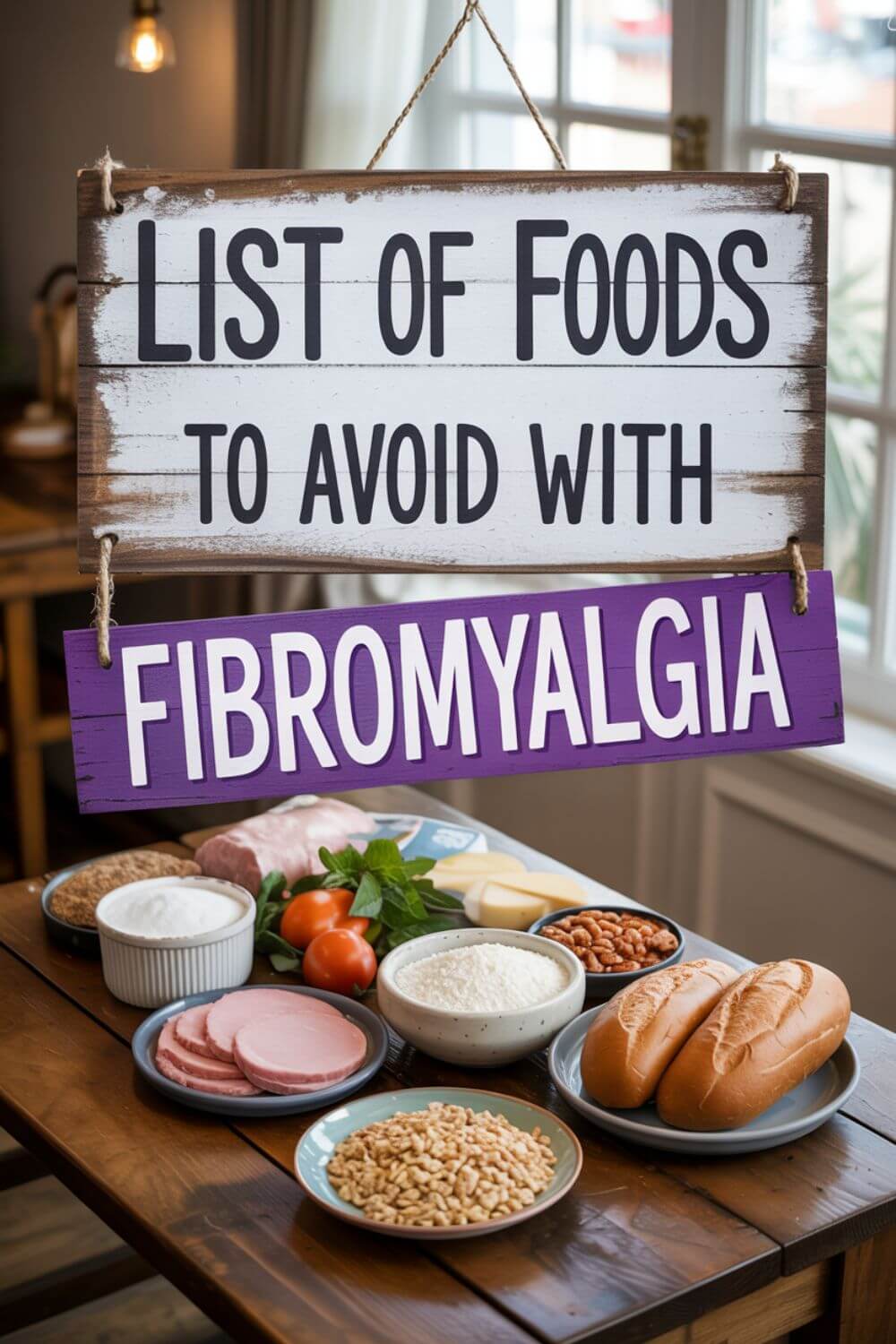
Choosing Whole Foods for Fibromyalgia
When it comes to managing fibromyalgia symptoms, one important aspect to consider is the type of foods we consume. Processed foods and refined carbohydrates should be avoided, as they tend to have more additives and fewer nutrients compared to whole foods. By choosing whole foods, you can support her overall health and alleviate symptoms.
Whole grains are a great alternative to refined carbohydrates. Options such as quinoa, amaranth, whole wheat berries, buckwheat groats, or brown or wild rice provide more fiber and essential nutrients that are beneficial for managing fibro. So, instead of bread, pasta, or rice, you should try to opt for sweet potatoes or plain potatoes, which offer a healthier and more nutrient-dense choice.
Fibromyalgia-friendly diets should prioritize fruits and vegetables, which are rich in antioxidants and essential nutrients. Try to incorporate cold-water fish, such as salmon or tuna, which can provide omega-3 fatty acids that have been linked to reducing pain and inflammation.
Focus on whole foods because it can support her chronic pain management and overall well-being.
| Food Group | Examples |
|---|---|
| Fruits | Apples, berries, oranges, pineapple |
| Vegetables | Leafy greens, broccoli, bell peppers, carrots |
| Whole Grains | Quinoa, amaranth, whole wheat berries, brown rice |
| Cold-Water Fish | Salmon, tuna, mackerel |
| Nuts and Seeds | Almonds, walnuts, chia seeds, flaxseeds |
The DASH and Mediterranean Diets
When it comes to managing fibromyalgia symptoms through diet, two popular options to consider are the DASH diet and the Mediterranean diet.
What are they?
These eating plans have been shown to have numerous health benefits, including lower blood pressure and cholesterol levels. Incorporating elements of these diets into a fibromyalgia-friendly eating plan, she can support her health and potentially alleviate symptoms.
The DASH diet, which stands for Dietary Approaches to Stop Hypertension, focuses on reducing inflammation in the body. This can be particularly beneficial for individuals with fibromyalgia, as inflammation is often associated with increased pain levels.
The DASH diet involves consuming a variety of fruits, vegetables, lean proteins, whole grains, nuts, seeds, legumes, and low-fat or no-fat dairy foods. By emphasizing these nutrient-rich foods, individuals can nourish their bodies and help manage their fibromyalgia symptoms.
The Mediterranean diet, on the other hand, is inspired by the traditional eating patterns of countries bordering the Mediterranean Sea. This diet places an emphasis on fresh fruits and vegetables, whole grains, lean proteins (such as fish and poultry), healthy fats (like olive oil and nuts), and moderate consumption of red wine.
The Mediterranean diet is rich in antioxidants and anti-inflammatory compounds, which can help alleviate symptoms associated with fibromyalgia.
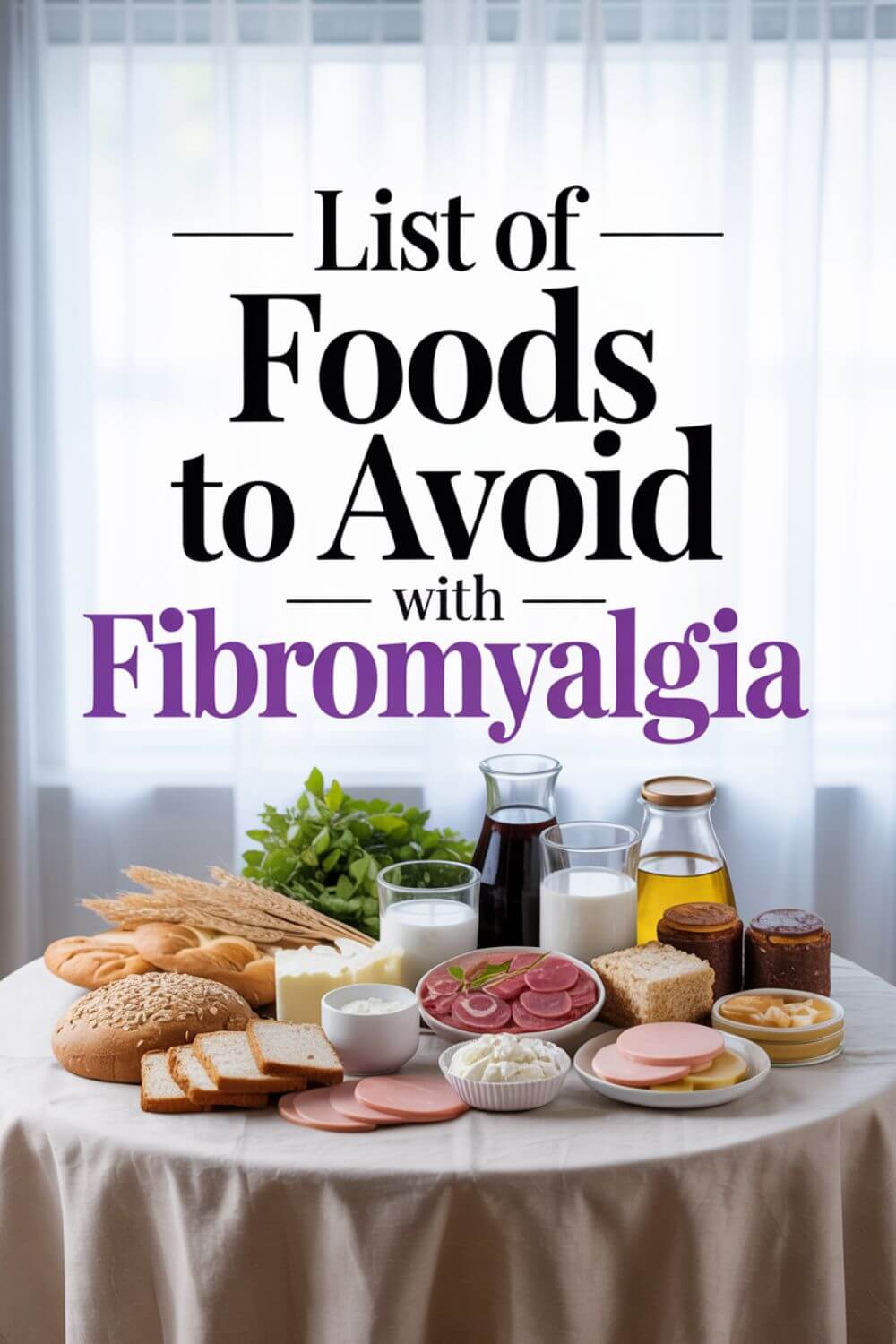
Comparison of the DASH and Mediterranean Diets
It’s important to note that while the DASH and Mediterranean diets have shown promise in managing fibromyalgia symptoms, the results may vary. It’s always a good idea to work with a healthcare professional or registered dietitian to customize a dietary plan that suits your specific needs and preferences.
| DASH Diet | Mediterranean Diet | |
|---|---|---|
| Key Components | Fruits, vegetables, lean proteins, whole grains, nuts, seeds, legumes, low-fat or no-fat dairy foods | Fruits, vegetables, whole grains, lean proteins (fish, poultry), healthy fats (olive oil, nuts), moderate red wine consumption |
| Benefits | Reduced inflammation, lower blood pressure | Antioxidant-rich, anti-inflammatory |
| Recommended for | Individuals with fibromyalgia seeking to manage symptoms and improve overall health | Individuals with fibromyalgia seeking to manage symptoms and incorporate an anti-inflammatory eating plan |
Fibromyalgia Pain Management Diet: Avoiding Cured Meats
When it comes to managing fibro symptoms, paying attention to your diet is essential. One food category that people with fibro should avoid is cured meats. These meats, including bacon, sausage, deli meat, and beef jerky, often contain added salt, preservatives, and natural flavors that may trigger inflammation and worsen symptoms.
Instead of relying on cured meats for protein, consider opting for fresh, unprocessed meats like turkey, fish, or vegetable-based substitutes. These choices not only provide essential nutrients but also support a healthier diet that can contribute to overall well-being and pain management.
Comparison of Cured Meats vs. Healthier Alternatives
| Cured Meats | Healthier Alternatives |
|---|---|
| High in added salt, preservatives, and natural flavors | Lower in sodium and free from additives |
| Potential triggers for inflammation | Less likely to trigger inflammation |
| Processed and may contain unhealthy fats | Fresh and unprocessed, providing essential nutrients |
Omega-3 Fatty Acids and Vitamin D
Fibromyalgia sufferers can benefit from incorporating omega-3 fatty acids and vitamin D into their diet. These nutrients have been linked to reducing pain and inflammation, which are common symptoms of fibromyalgia. Include foods rich in nutrients so it can provide natural relief and support overall well-being.
The Power of Omega-3 Fatty Acids
Omega-3 fatty acids are known for their anti-inflammatory properties, making them a valuable addition to a fibromyalgia pain management diet.
Cold-water fish, such as salmon and tuna, are excellent sources of omega-3 fatty acids.
These fatty acids help reduce inflammation in the body, which can alleviate pain and improve overall symptoms of fibromyalgia. For those who prefer not to consume fish, omega-3 supplements or cod liver oil are also effective alternatives.
The Importance of Vitamin D
Vitamin D is another crucial nutrient for fibro people. It plays a role in regulating pain perception and reducing inflammation. While sun exposure is a natural way to increase vitamin D levels, caution should be taken to avoid excessive sun exposure.
Fortified foods, such as orange juice and milk, can provide a good source of vitamin D. Incorporating these foods into the diet can contribute to reduced symptoms and improved quality of life for fibromyalgia sufferers.
To optimize nutrition and support fibromyalgia management, it is essential to include foods rich in omega-3 fatty acids and vitamin D. Add these nutrients to her a well-balanced diet, to help her experience natural relief and better manage symptoms.
It is important to consult with healthcare professionals and consider individual dietary needs and preferences when making dietary changes for fibromyalgia management.
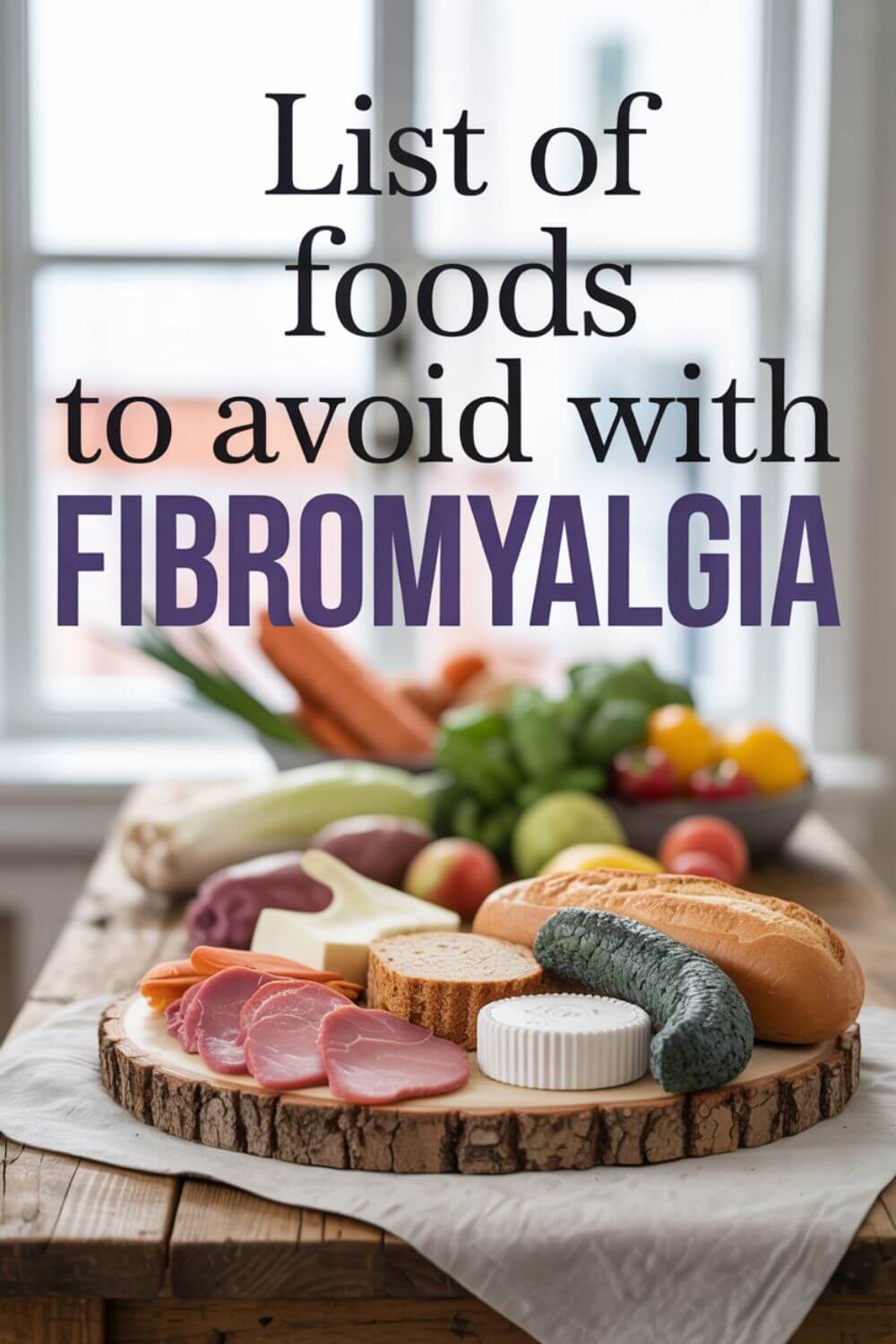
Magnesium and Fibromyalgia Symptoms
Fibromyalgia sufferers often experience symptoms such as chronic pain, fatigue, and muscle stiffness. My wife includes magnesium-rich foods in her diet alongside magnesium spray.
It is very beneficial for managing her symptoms. Magnesium plays a crucial role in nerve function, muscle relaxation, and energy production, making it essential in fibromyalgia management.
Foods that are naturally rich in magnesium include legumes, nuts and seeds, avocado, yogurt, bananas, fatty fish, dark chocolate, and dark leafy greens.
These foods not only provide magnesium but also contain other important nutrients that support overall health. Incorporate magnesium-rich foods into her diet, to potentially alleviate symptoms and improve her quality of life.
Benefits of Magnesium
In addition to dietary sources, consider magnesium supplementation under the guidance of a healthcare professional. Supplements can be a convenient way to ensure an adequate intake of magnesium, especially if dietary sources are limited or access to certain foods is challenging.
Note that magnesium supplementation should be used in conjunction with other fibromyalgia management strategies, like her meds, exercise, and stress reduction techniques.
Consult it with a healthcare professional before starting any new supplements is recommended to determine the appropriate dosage and ensure no contraindications with existing medications.
| Magnesium-Rich Foods | Magnesium Content (per 100g) |
|---|---|
| Almonds | 270mg |
| Spinach | 79mg |
| Avocado | 29mg |
| Salmon | 26mg |
| Black beans | 60mg |
Antioxidants and Fighting Excitotoxicity
When it comes to managing fibromyalgia symptoms, incorporating foods rich in antioxidants into your diet can offer significant benefits.
Antioxidants play a crucial role in neutralizing free radicals and reducing oxidative stress, which can alleviate symptoms of fibromyalgia. These powerful compounds help combat the effects of dietary excitotoxins and promote overall well-being.
Colorful fruits and vegetables are excellent sources of antioxidants. Opt for those with bright red, green, orange, yellow, and purple hues to provide a boost of these beneficial compounds. Some examples include berries, spinach, kale, bell peppers, and purple cabbage.
Not only do these foods add vibrancy to the plate, they also contribute to reducing inflammation and supporting her body’s natural defense mechanisms.
Incorporating other antioxidant-rich foods into her diet can also be beneficial. Consider including foods like dark chocolate, walnuts, pecans, and green tea. These options are not only delicious but also provide a wealth of antioxidants to help fight excitotoxicity and reduce fibromyalgia flare-ups.
| Antioxidant-Rich Foods | Benefits |
|---|---|
| Berries (blueberries, strawberries, raspberries) | High in anthocyanins, which have anti-inflammatory properties |
| Spinach and Kale | Packed with vitamins, minerals, and antioxidants |
| Bell Peppers | Rich in vitamin C and carotenoids |
| Purple Cabbage | Contains anthocyanins and other antioxidants |
| Dark Chocolate | Provides flavonoids and polyphenols |
| Walnuts and Pecans | Good source of omega-3 fatty acids and other antioxidants |
| Green Tea | Contains catechins, known for their anti-inflammatory properties |
By incorporating these antioxidant-rich foods into your daily meals and snacks, you can support your body’s natural defense system and reduce the impact of dietary excitotoxins. Remember to choose a variety of colors to ensure a wide range of antioxidants.
With these dietary changes, you can take proactive steps towards managing your fibromyalgia symptoms and promoting a healthier, more vibrant life.
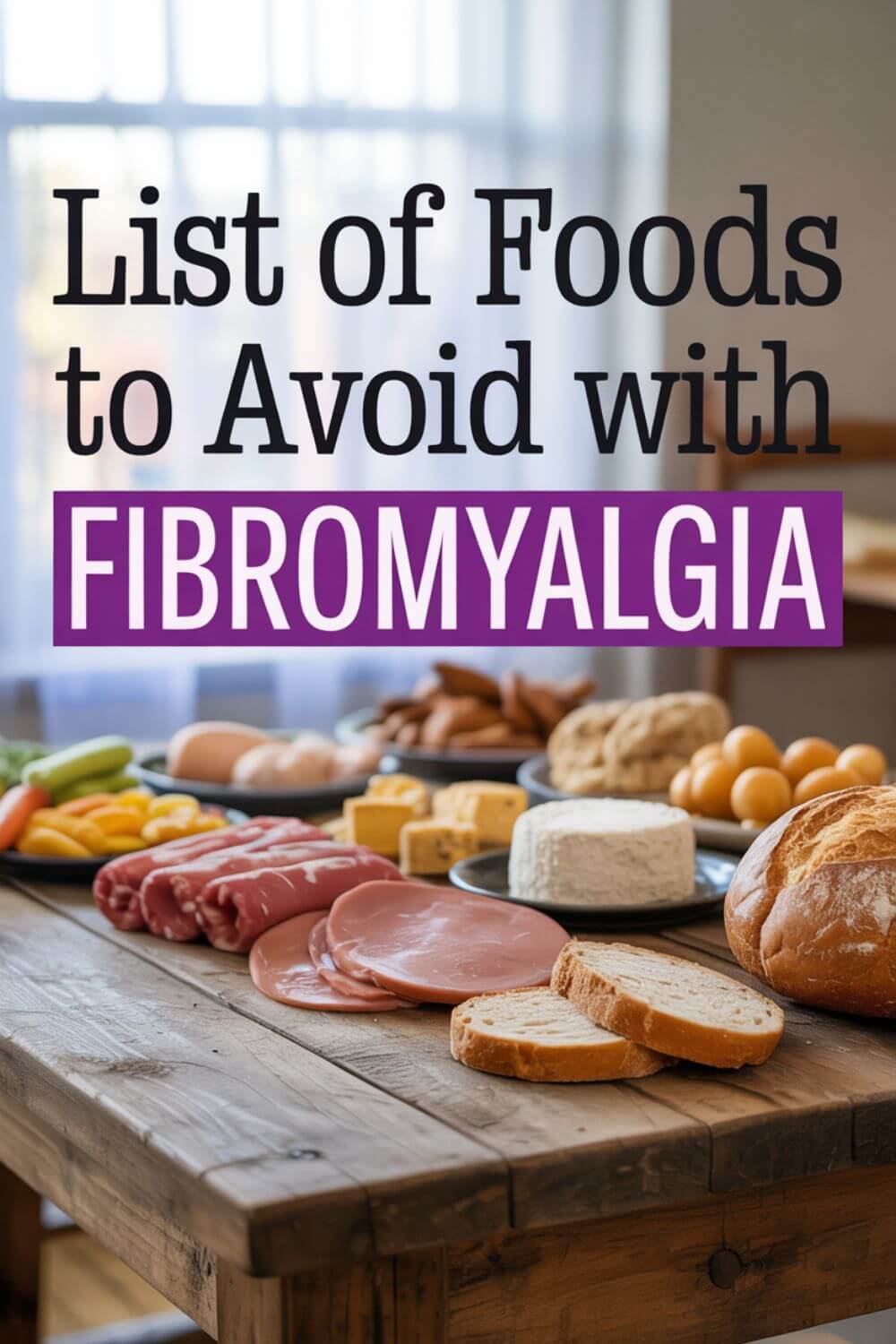
Common Hidden Sources of Glutamate in Foods
| Ingredients | Common Foods Containing the Ingredients |
|---|---|
| Monosodium glutamate (MSG) | Canned soups, processed meats, snack foods |
| Hydrolyzed protein | Seasonings, sauces, processed snacks |
| Autolyzed yeast extract | Soups, sauces, savory snacks |
| Glutamic acid | Processed meats, canned vegetables, certain condiments |
By familiarizing yourself with common hidden sources of glutamate, you can make more informed choices when grocery shopping and meal planning. It may also be helpful to keep your food diary to track any correlations between symptom flare-ups and specific ingredients or foods.
If you suspect that glutamate is a trigger for her symptoms, consider consulting with a healthcare professional or a registered dietitian who specializes in fibromyalgia.
They can provide personalized guidance and support to help you navigate the complexities of food labels and make dietary choices that best support her overall health and well-being.
Inflammatory Foods and Fibromyalgia Symptoms
When it comes to managing fibromyalgia symptoms, avoiding inflammatory foods can play a crucial role. Certain foods have been found to trigger inflammation in the body, leading to increased pain levels and discomfort for people with fibromyalgia.
Identify and eliminate these inflammatory foods from her diet to support her pain management efforts and improve their overall well-being.
One of the key culprits in triggering inflammation is consuming foods high in sugar and refined carbohydrates. These foods can cause spikes in blood sugar levels, increasing the inflammation throughout her body.
It is important for her to limit the intake of sugary snacks, desserts, and processed foods that contain added sugars. Instead, she should focus on consuming whole foods that are low in sugar and provide essential nutrients.
In addition to sugar, unhealthy fats found in vegetable oils can also contribute to inflammation, so avoid foods that are fried or prepared with vegetable oils high in omega-6 fatty acids, such as corn, soy, and sunflower oils.
Instead, opt for healthier fats like olive oil, avocado, and nuts to support pain management efforts.
Inflammatory List of Foods to Avoid with Fibromyalgia
| Food Group | Foods to Avoid |
|---|---|
| Sugar and Refined Carbohydrates | Processed snacks, sugary desserts, white bread, white rice |
| Unhealthy Fats | Vegetable oils (corn, soy, sunflower), fried foods |
| Alcohol | Beer, wine, spirits |
| Processed Meats | Bacon, sausage, deli meats |
| Artificial Additives | MSG, artificial sweeteners |
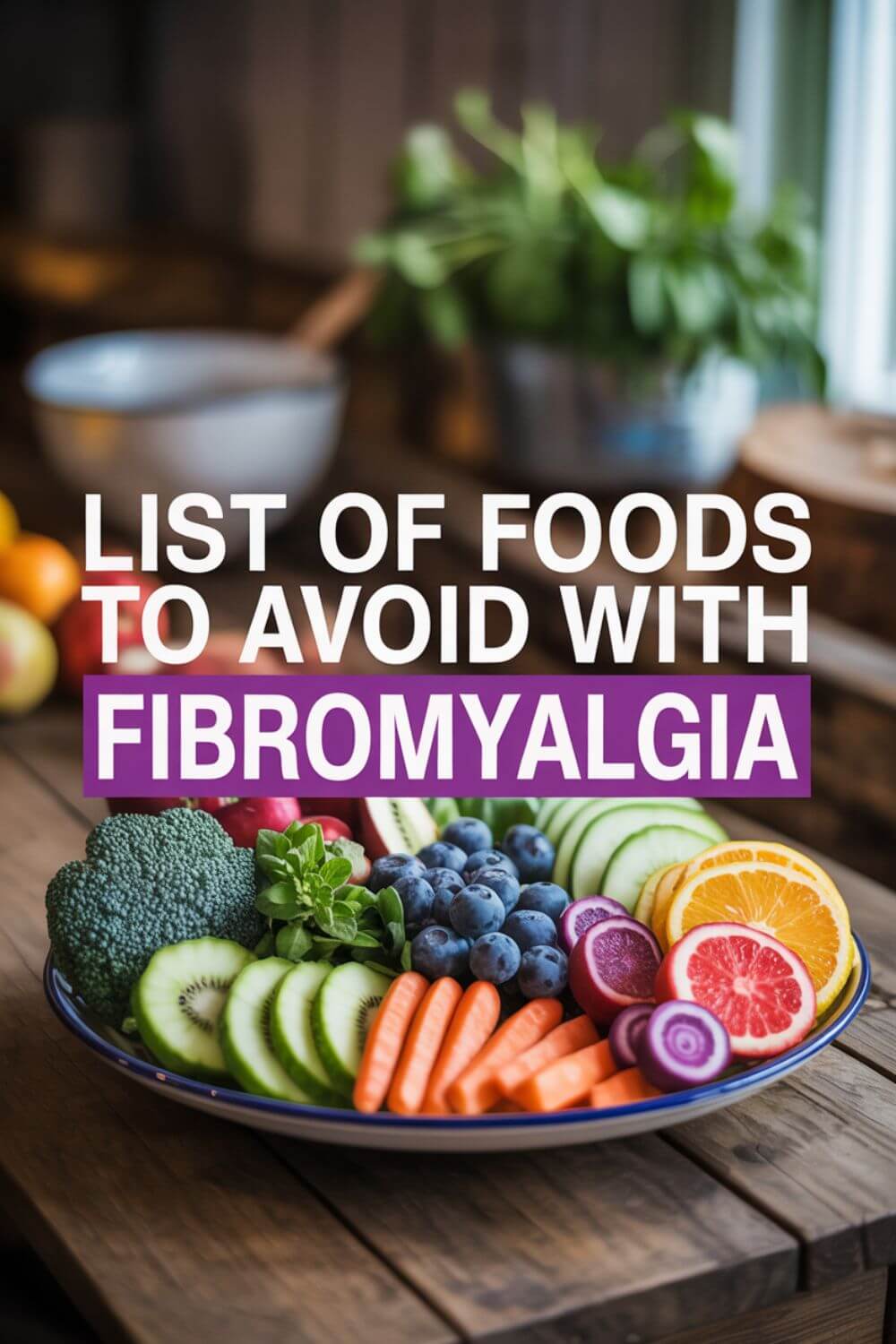
Final Word on the List of Foods to Avoid with Fibromyalgia
If you’ve made it this far, I want you to know something important.
You’re not weak for struggling. You’re not overreacting for noticing how food affects your pain. And you’re not alone in feeling overwhelmed by the changes fibromyalgia demands. I’ve seen it firsthand — in the woman I love more than anything in this world. I’ve watched her fight battles no one could see. And I’ve stood by her side, helpless at times, desperate to ease her pain in any way I could.
One of the most unexpected but powerful tools we discovered was food. Not in the trendy, restrictive, guilt-laden way the internet often talks about. But in a quiet, respectful, trial-and-error kind of way. A way rooted in love, not control. In compassion, not perfection.
The list of foods to avoid with fibromyalgia was never about punishment. It was a path — one that helped us understand her body’s needs, ease some of her worst days, and give her a little more freedom in a life that chronic illness had made so unpredictable. We learned that sugar, processed foods, dairy, gluten, additives, and sometimes even certain vegetables weren’t just meals — they were signals. Clues. Messengers that her body couldn’t ignore, and neither could we.
But we also learned something just as important: food can bring joy back.
It wasn’t just about what to avoid. It was about what to embrace. Warm soups that soothed her stomach. Gentle, caffeine-free drinks that didn’t spike her anxiety. Meals cooked slowly, with love, in a home that we made safe — not just physically, but emotionally. A home where healing could happen.
This journey brought us closer. It deepened my respect for her resilience. It taught me how to listen in ways I never knew before — not just to her words, but to her silences. To her body. To her tears.
If you’re walking this road yourself — whether you’re the one in pain or the one supporting someone who is — please know this: every small step you take matters. Every gentle food choice, every skipped trigger, every win (even the invisible ones) is worth celebrating.
You are not broken. You are navigating something incredibly hard with a strength most people will never understand.
And if you’re still trying to figure it all out, that’s okay too. There’s no finish line. Just moments of clarity, comfort, and connection. Keep moving toward them. You deserve that. Your body deserves that.
And if no one’s told you this lately. I see you. I hear you. I believe you. And I’m walking this with you.
Source Links to the List of Foods to Avoid with Fibromyalgia
- https://www.everydayhealth.com/fibromyalgia/diet/fibromyalgia-what-eat-what-avoid/
- https://www.medicalnewstoday.com/articles/315386
- https://jerseyrehab.com/foods-that-could-worsen-fibromyalgia/


About Me
Hi, I’m Lucjan! The reason why I decided to create this blog was my beautiful wife, who experienced a lot of pain in life, but also the lack of information about endometriosis and fibromyalgia for men…
